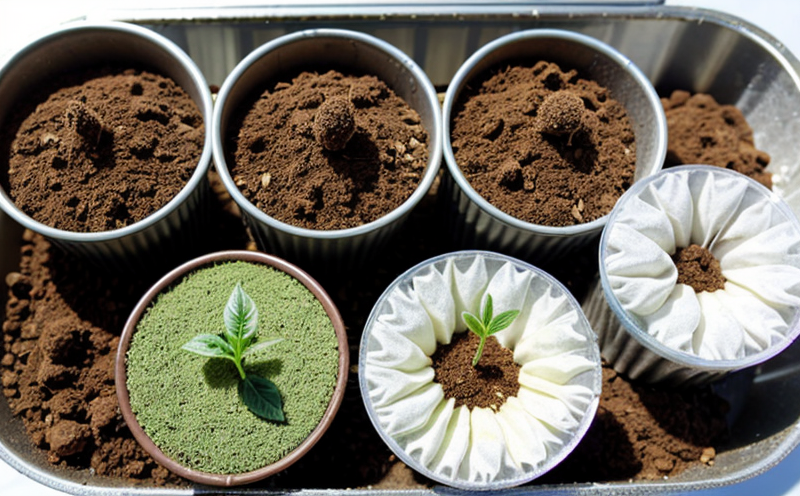Accelerated Aging Germination Testing
The Accelerated Aging Germination Test (AAGT) is a critical method used in agricultural and forestry testing to evaluate seed quality. This test simulates the effects of natural aging processes on seeds, allowing for an assessment of their viability under accelerated conditions. By subjecting seeds to controlled environmental stress factors such as high humidity, elevated temperatures, and exposure to light, this technique provides insights into a seed’s resistance to deterioration before they are planted.
This test is particularly useful in ensuring that seeds meet the highest standards for quality and performance. It helps identify seeds with potential issues early in their lifecycle, enabling producers and researchers to improve future crop yields by selecting more resilient varieties. The AAGT aligns with international standards such as ISO 3632-1:2017, which specifies methods for testing seed viability.
During the test, seeds are subjected to conditions that mimic environmental stressors found in storage and transportation environments. This includes high humidity levels up to 95% relative humidity (RH) combined with temperatures ranging from 35°C to 40°C. Light exposure can also be included depending on the specific requirements set by the client or regulatory body. Specimen preparation involves selecting representative samples of seeds, which are then placed in appropriate containers designed for maintaining precise environmental controls.
Once exposed to these accelerated aging conditions, the seeds undergo regular observation periods where germination rates are recorded. These observations help determine whether any deterioration has occurred and if there is a significant difference between different seed lots or varieties. The results of this testing can be used not only for quality assurance but also as part of research into improving seed resistance to adverse environmental factors.
The importance of accurate and reliable AAGT cannot be overstated, especially when dealing with large-scale agricultural operations where even small reductions in germination rates can have substantial economic impacts. By employing this testing method early in the production process, farmers, researchers, and industry professionals gain valuable insights into seed performance under various stress conditions.
Additionally, AAGT plays a crucial role in ensuring compliance with regulatory standards set by organizations like the Food and Agriculture Organization (FAO) of the United Nations. Adhering to these guidelines helps maintain public confidence in agricultural products while fostering sustainable practices within the sector.
Benefits
- Early Detection: Identifies potential problems with seed quality before planting, allowing for corrective actions to be taken.
- Informed Decision Making: Provides data-driven information that can inform breeding programs aimed at developing more resilient crop varieties.
- Cost Efficiency: Saves resources by avoiding the use of non-viable seeds in field trials or large-scale plantations.
- Enhanced Quality Assurance: Ensures consistency across different batches of seeds, contributing to higher quality agricultural outputs.
Why Choose This Test
Selecting the right seed for your project or crop is essential. The Accelerated Aging Germination Test offers several advantages over other testing methods, making it a preferred choice among professionals in agriculture and forestry.
One key advantage of using this test is its ability to provide accurate predictions regarding seed viability under real-world conditions. By simulating the effects of natural aging processes, the AAGT gives you an unbiased assessment of how well your seeds will perform once they are planted. This ensures that only high-quality seeds make it into fields and greenhouses.
Another benefit is its efficiency in identifying weak or problematic seed lots early on, thereby reducing waste and increasing overall yield potential. With the ability to conduct these tests quickly but thoroughly, you can save time and money without compromising on quality standards.
The test also supports sustainable practices by encouraging the use of viable seeds from the outset, thus promoting better resource management within agricultural operations.
Quality and Reliability Assurance
Incorporating the Accelerated Aging Germination Test into your quality assurance protocols is an effective way to maintain product consistency and reliability. This test not only helps ensure that seeds meet strict standards but also contributes significantly towards achieving long-term sustainability goals.
By implementing AAGT as part of your overall testing strategy, you can demonstrate compliance with relevant international standards like ISO 3632-1:2017, enhancing trust among consumers and regulatory bodies alike. Furthermore, consistent use of this method allows for continuous improvement in seed quality over time.
The reliability of the results obtained from AAGT is further enhanced by our state-of-the-art facilities equipped with advanced instrumentation capable of maintaining precise environmental controls during testing. Our team of experts ensures that every aspect of specimen preparation and observation adheres strictly to best practices, ensuring accurate and reliable outcomes.





